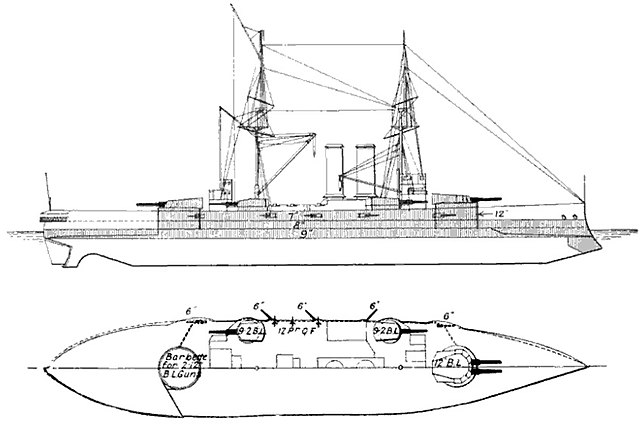HMS King Edward VII, named after King Edward VII, was the lead ship of her class of pre-dreadnought battleships built for the British Royal Navy. Armed with a battery of four 12-inch (305 mm) and four 9.2 in (234 mm) guns, she and her sister ships marked a significant advance in offensive power compared to earlier British battleship designs that did not carry the 9.2 in guns. King Edward VII was built at the Devonport Dockyard, and was laid down in March 1902, launched in July 1903, and completed in February 1905.
HMS King Edward VII underway
King Edward VII passing New Brighton
Painting of King Edward VII underway
King Edward VII-class battleship
The King Edward VII class was a class of eight pre-dreadnought battleships launched by the Royal Navy between 1903 and 1905. The class comprised King Edward VII, the lead ship, Commonwealth, Hindustan, Britannia, Dominion, New Zealand, Africa, and Hibernia. They marked the first major development of the basic pre-dreadnought type that had been developed with the Majestic type of the mid-1890s, all of which had been designed by the Director of Naval Construction, William Henry White, with the primary innovation being the adoption of a heavy secondary battery of four 9.2-inch (234 mm) guns to supplement the standard main battery of four 12 in (305 mm) guns. The King Edward VIIs were among the last pre-dreadnoughts built for the Royal Navy before the construction and launch of the revolutionary battleship HMS Dreadnought in 1906, which immediately rendered them obsolescent.
HMS King Edward VII, lead ship of the King Edward VII class.
Line-drawing of the King Edward VII class
One of King Edward VII's 9.2-inch gun turrets
Australian soldiers touring HMS Commonwealth in 1919; note the 6-inch gun now in an open pivot mount on the upper deck






